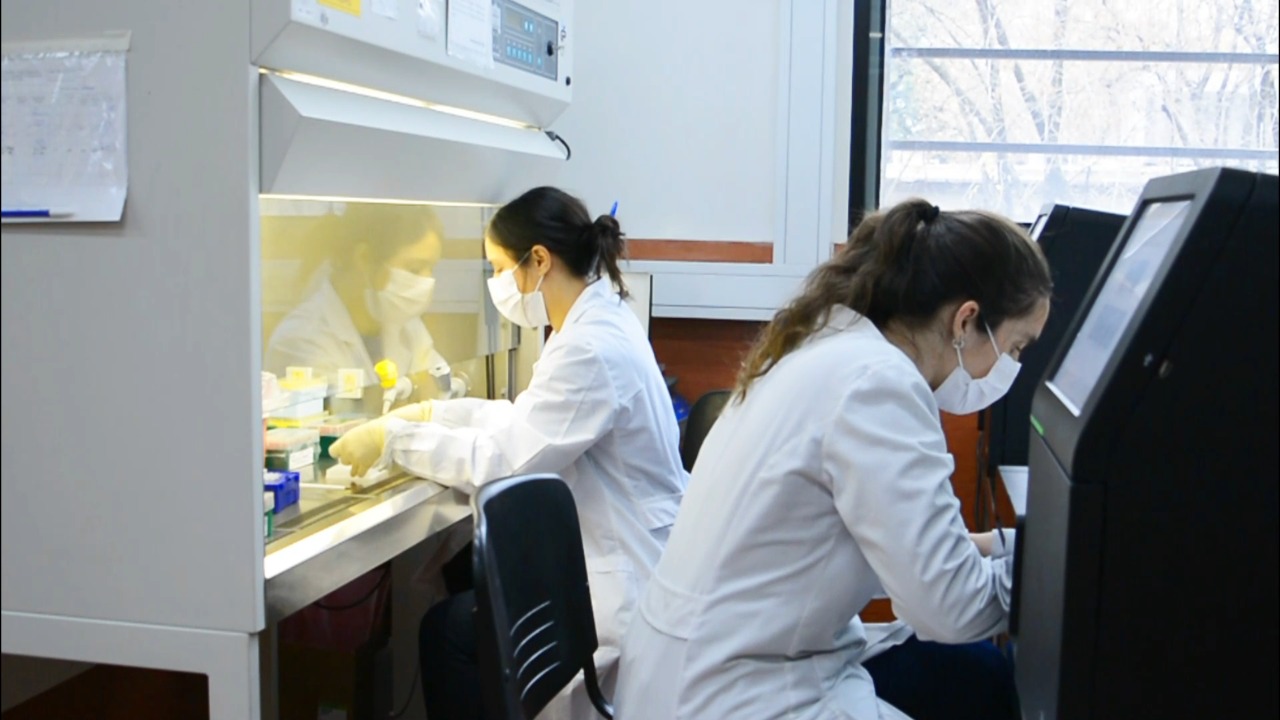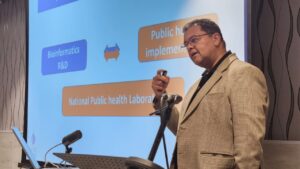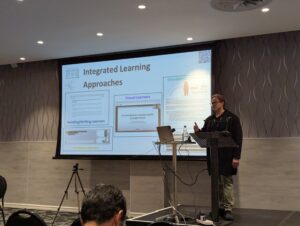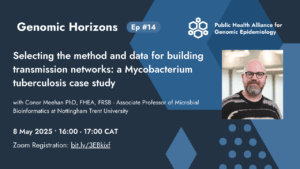In this quarter’s edition of the PHA4GE newsletter, we shine a spotlight on Dr. Josefina Campos, the Director of the National Center of Genomics and Bioinformatics -ANLIS ‘Dr Carlos G Malbrán’, which forms an integral part of the National Administration of laboratories and for Health Institutes in Argentina. Dr. Campos is also a member of the PHA4GE Data Structures Working Group. The discussion was captured during an interview between Dr. Emma Griffiths (Chair, Data Structures WG) and Dr. Campos in late July.
Dr. Campos, what is your current affiliation and position?
I am the Director of the Unidad Operativa Centro Nacional de Genómica y Bioinformática at ANLIS “Dr Carlos G. Malbrán” in Buenos Aires, Argentina. It is a new, dedicated Genomics and Bioinformatics center. The lab used to be part of another Institute, but due to the demonstrated importance of genomics and bioinformatics during the COVID-19 pandemic, the lab has recently expanded and is now its own institute.
Wow, that’s fantastic! Are you only sequencing SARS-CoV-2 in the lab?
We are definitely sequencing SARS-CoV-2 genomes from across the country, but our scope is quite broad. We also sequence foodborne pathogens, and also incorporate environmental genomics because linking environmental, animal and human sources of pathogens using a One Health approach is incredibly powerful for investigating and responding to infectious disease. We also have an interest in antimicrobial resistance, human genomics, TB, Human Papillomavirus, Neisseria meningitidis and Neisseria gonorrhoeae, and other areas which we work hand by hand with the National Reference Laboratories that do the national surveillance.
But we don’t just do whole genome sequencing, we use a range of genetics and bioinformatics techniques.
How big is the lab?
Before COVID, we had 4 people in the lab – myself and three staff members. Currently we have seven, and by the end of the year we aim to keep incorporating members. We anticipate that the lab will continue to grow as well next year. We are in a dedicated BioSafety level 2 lab for our genomics work. We have a NovaSeq, 2 MisSeqs, and 4 robots to help with sample prep and automation.

Have genomics and bioinformatics been a public health priority for a long time in Argentina? And how is Argentina networked to other countries in Latin America?
I would say our journey first began when we got involved with PulseNet Latin America and the Caribbean (PulseNet LAC). PulseNet were the pioneers in building a foodborne pathogen molecular surveillance network. I attended a course on genomics surveillance as an instructor for pulse-field gel electrophoresis (PFGE) at the Wellcome Trust Advanced courses in 2013 and knew nothing about it, and had to read as much as I could before the course. Before that, I was put in charge of training labs to perform PFGE all across Latin America. I’ve visited most countries through that training program. Then things started to move fast when PulseNet shifted to genomic surveillance. In 2016, we built the sequencing lab with basically myself, one tech and a MiSeq. I worked with Ruth Timme (US FDA) to learn sequencing and analysis techniques so we could participate in GenomeTrakr.
We work in collaboration of a number of networks lead by PAHO now across Latin America which include PulseNet, as well as La Red Latinoamericana de Vigilancia de la Resistencia a los Antimicrobianos (ReLAVRA, or The Latin American and Caribbean Network for Antimicrobial Resistance Surveillance in English). Currently, the network is one of the oldest, and largest regional AMR surveillance networks in the world, that regularly report antimicrobial susceptibility information from sentinel labs covering a wide range of foodborne, nosocomial and community-acquired pathogens. We are now incorporating genomic surveillance into the region and have joint meetings between ReLAVRA and PulseNet to share protocols and solve common issues. We have also participated in the recently formed Regional Genomic Surveillance Network that sequences and tracks COVID-19 virus variants throughout Latin America and the Caribbean, which arose from the existing influenza network.
What have been some of your greatest successes doing this work?
Definitely capacity building – using different strategies to bring sequencing to different Latin American countries. You know, not very long ago – maybe 3-4 years ago – no one knew what genomics was in the training courses. Now we are targeting how to implement genomics (not if we should implement it), and we are doing it at a level on par with “high income” countries. Previously we were always trained by others, now we are at the forefront which I think puts us in a stronger, more equitable position in global conversations. Also, we are very proud of our collaborations – the consensus building we have been able to achieve (both within Argentina where our sequencing lab works hand-in-hand with the national reference lab, as well as across Latin America) in a very short time. The Networks have been a very powerful tool for this.
What are some of the challenges you have faced in setting up genomics and bioinformatics labs and surveillance networks?
Implementing genomics and bioinformatics is not as simple as giving someone a tech and a sequencer, you have to think through the process from end-to-end. This was really brought home to me when I used to travel to different labs to teach PFGE training. Sometimes a lab might not have something simple like a shaker/water bath, which would mean we would have to troubleshoot. Now, when we are working on implementing genomics, sometimes labs don’t have enough cold storage for samples, or have internet issues or unreliable electricity supplies, so that data transfers get interrupted. There are so many different contexts, so many different realities for people that it is hard to think globally – to think outside your own experience. That’s why it is so important to listen and to hear different voices when you are creating networks and implementing new technology in public health. So when we are seeking funding, it’s not just about paying for the staff or the sequencer, you have to think about procuring reagents (the cost and whether the supply is reliable), the freezers and storage containment, the Qubit, the information management system, the compute infrastructure, and so on.
Pursuing funding can be a challenge for researchers in public health in LMICs. Often, if we utilize funding pathways used by HICs, we are co-PIs in international grants instead of PIs. That can be because of issues of trust regarding the disbursement of funds from international funders. So we need to figure out what are the best opportunities, as we need to collaborate with the right people. Also, it can be difficult to promote your work because we can’t afford to go to high profile conferences, we are not invited to expert committees, if English is not our mother tongue it can be more difficult to publish in different journals. This all contributes to making us less visible.


How does your career work relate to the work you do in PHA4GE?
The PHA4GE work intersects with everything. I’m a PI on a new grant from the Wellcome Trust for strengthening COVID genomic surveillance in Latin America. It’s a one year grant, but it positions us to expand from SARS-CoV-2 to other pathogens. We will be able to start Nanopore sequencing in regions that lack capacity in order to increase their representation, and build up the network among the centres that are already generating data. Our goal is generating consensus among Latin American countries in reporting, interpreting results, and how we share/upload to public repositories. We will work together with PAHO as the link for this work, but we will be implementing the PHA4GE SARS-CoV-2 contextual data specification among the network to better enable harmonization across labs. We have also been piloting PHA4GE’s hAMRonization tool together with ReLAVRA and PulseNet labs using genomics surveillance for AMR, which helps to harmonize the results of different AMR gene detection tools and provides interactive and tabular reports. In that pilot, we translated the PHA4GE information package for policy makers and installation instructions for bioinformaticians into Spanish. I think we will be including a story about that work on the PHA4GE website shortly. We will try to work on translation of other materials with PHA4GE in the future as well.
What is next for the Data Structures WG?
The Data Structures WG has plans for a lot of exciting new projects in the near future. To complement the AMR gene detection harmonization tool, we will be expanding its capabilities to harmonizing information about point mutations, which will include expanding the data specification as well as parsers and the harmonized reporting. We are also working on potential solutions for harmonizing different AMR databases. I’m very excited about a brand new project we have been discussing about using the Data Use Ontology to add attributes to metadata shared with public repositories to create a 2-way street of communication between data providers and data consumers. The DUO tags can enable data providers to include information in their submissions about data attribution, collaborations, data use, and more.
Photos courtesy of the ANLIS”Dr Carlos G. Malbrán”.
For more information about the activities of the Data Structures Working Group, click this link.



